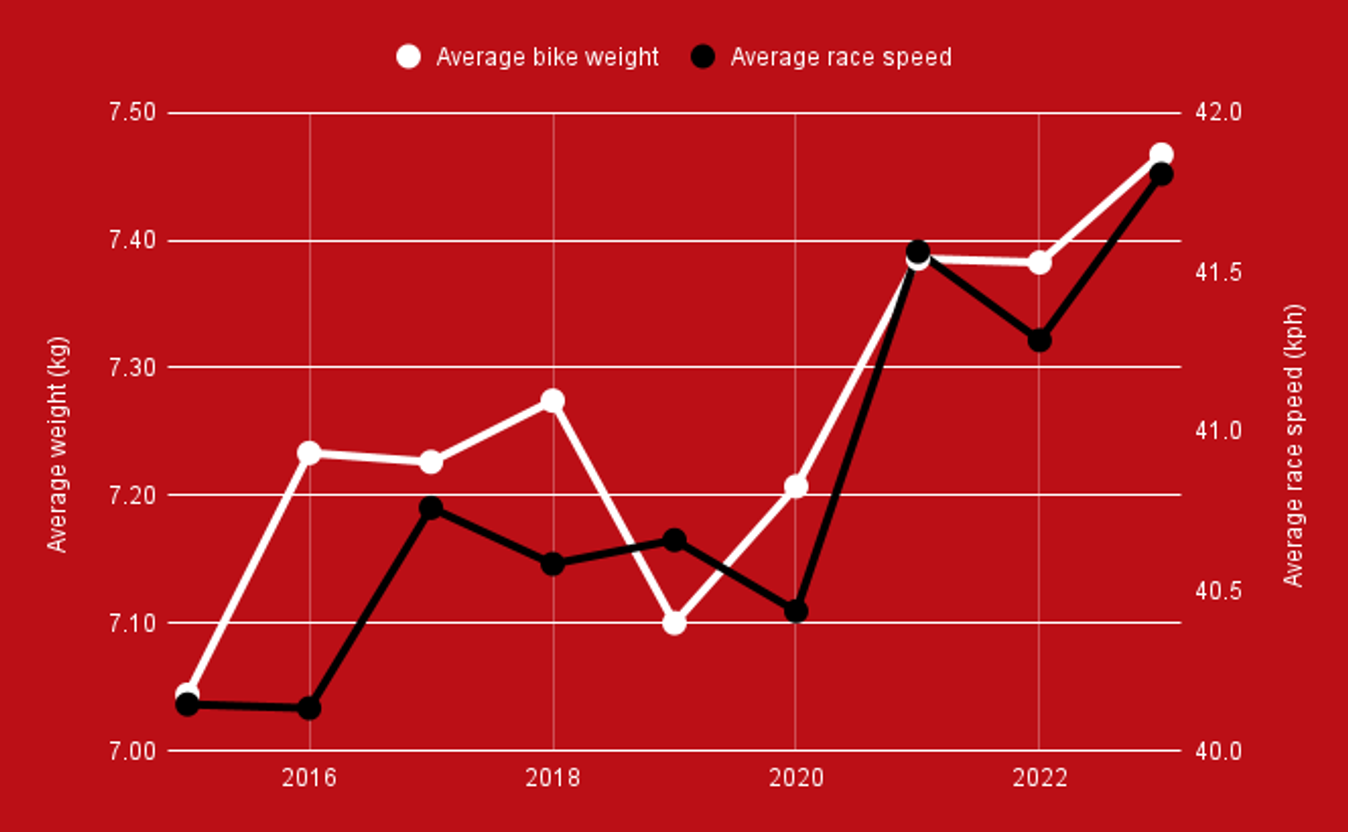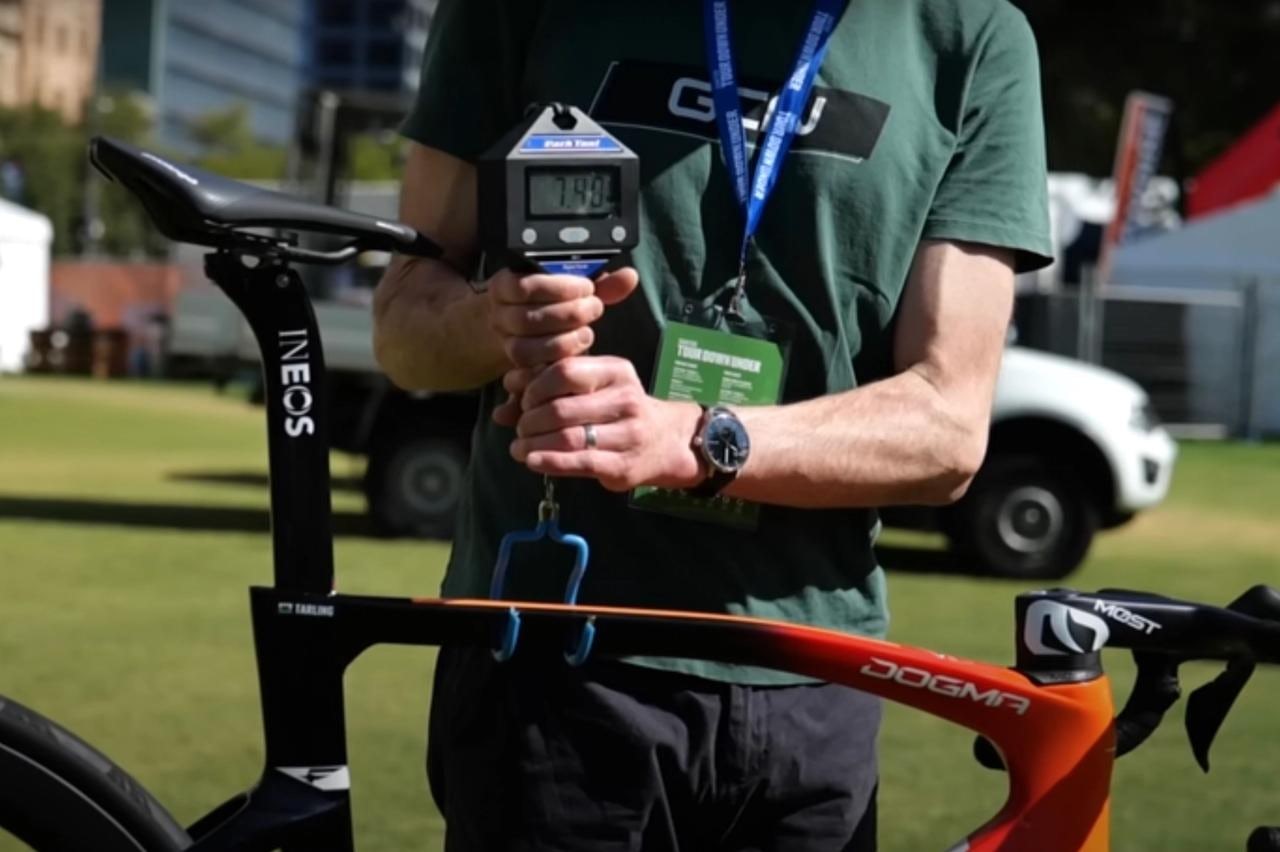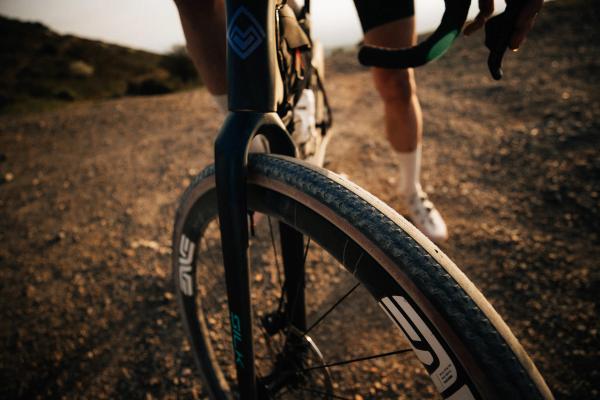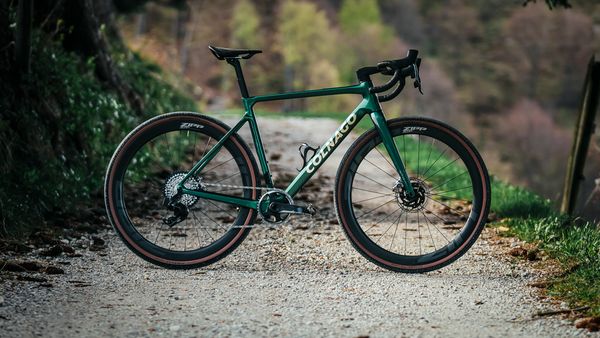Analysing nine years of GCN pro bike checks: here's why bikes are getting heavier
Everyone knows pro bikes are heavier than they used to be. We look at the data to find out what caused it.
James Howell-Jones
Junior Writer
Roll back the clock a few years, and it seemed that all the bikes in the pro peloton were in danger of beating the UCI’s 6.8kg weight limit. Look at the bikes of the pro peloton today, and most bikes can’t even get close to it. What happened to all those claims of technological advancement?
To find out where things went wrong, we’ve revisited every pro bike video we’ve released since the beginning of GCN. For the past decade, we’ve been shooting bikes from the pro peloton, and since 2015, we’ve been weighing them on the trusty GCN scales. By bringing all that information together, we’ve identified when road bikes started piling on the pounds, and what caused it.
Statisticians look away now: this analysis of just 193 bikes is a long way from rigorous. Nevertheless, our data set tells an interesting story about shifting priorities in road bike design. Essentially, instead of producing light bikes, designers have focussed on producing fast bikes. Once upon a time, shedding grams was the number one goal. Nowadays, brands are balancing weight, rolling resistance, comfort, and aerodynamics.

© GCN
Bike weight vs race speed, 2015 to 2023 (since the 2024 season hasn't finished yet)
The outcome is that the pro peloton is riding faster and faster every year. Our data set captures bikes raced in the WorldTour between 2015 and 2024. During those years, the average pro bike has gone from weighing 7.04kg to 7.42kg, but despite that extra 380g that each rider is lugging up the climbs, the speed of the pro peloton has risen from 40.15kph to 41.60kph.
But we want to go further than a basic ‘then vs now’. By studying the trends in the data, and by looking at the individual bike specs that epitomise each era, we’ve mapped out this transition within the bike industry. And before you jump to conclusions: no, it’s not just because of disc brakes.
2013-15: Weighted bottom brackets on super-light frames
Across almost all the bikes we looked at in the early years of GCN, there was a common theme: the bikes were so light that teams were adding weights to get them up to the UCI weight limit of 6.8kg. This was nothing new: manufacturers have been able to hit and even surpass that UCI limit pretty much since the rule was introduced in the year 2000.
When we started weighing pro bikes in 2015, the average weight across all the bikes was just 7.04kg. Lightweight ‘climbing’ bikes averaged 6.99kg, and even aero bikes averaged a svelte 7.12kg. Impressive, especially given our tendency to forget to take off the bottles when weighing the bikes…
Looking at the bikes themselves, it was easy to see why. Adam Yates’ 2015 Scott Addict is a perfect representation of the bikes of the era. It uses a simple, ‘double-diamond’ frame design with almost cylindrical tube shapes. The wheels are just 35mm deep. Yates goes so far as to forgo a power meter, presumably to shed grams — these days, you’d be hard-pressed to find a pro who’d say their power meter isn’t worth its weight in gold.
In most cases, these super light bikes were brought up to the legal weight by the mechanics. At the most basic level, they got the bikes up to weight by using heavier parts. Aluminium stems and bars were de rigueur in these years, favoured both for their resilience in crashes and their added weight.
Often, though, aluminium bars didn’t do enough, so mechanics found various ways to mount chunks of metal inside race bikes. Sometimes, they used a simple steel plate, mounted under the bottle cage. More common, though, were engineered plugs that sat inside the hollow centre of crank spindles. With an array of plugs at different weights, mechanics could chop and change to get their riders’ bikes as close to the UCI limit as possible.
Looking back, it seems totally ridiculous. Gerald Ciolek’s 2013 Trek Emonda, for instance, features the lightest production frame on the market, and is decked out with a super lightweight, carbon fibre SRAM Red crankset. And nestled into the spindle of this carbon masterpiece is a hunk of metal, there to bring the bike up to the legal weight.
At the time, there was a lot of debate about the UCI weight limit. It was widely regarded as archaic. Even the UCI agreed – in a 2015 press conference, UCI technical manager Mark Barfield said that the much-maligned rule was in review: “That weight limit is a bit of a relic of the past. It no longer does what it set out to do.”
2016-17: Bikes get heavier, but not because of disc brakes
Yet nothing changed, and so with the UCI holding fast on their 6.8kg rule, bike designers changed their approach. They set their weight obsession to one side and looked for other ways to improve their bikes by reducing rolling resistance and aerodynamic drag. Subsequently, the average weight of the bikes we weighed in 2016 leapt up, from 7.04kg to 7.23kg.
Aero bikes in particular were becoming notably paunchier. In 2016, the average weight of an aero bike was 7.41kg – almost 300g more than the year before. Looking at the individual bikes, it’s easy to see why. This was the year that we started to see strange, over-built aero bikes, some of which weighed in at almost 8kg. There was Peter Sagan’s 7.9kg Specialized Venge Vias, with its gloopy shapes and peculiar proprietary V-brakes. There was Fabian Cancellara’s 7.6kg Trek Madone, with thick aero tubes, the comfort-boosting ‘iso-speed decoupler’, and complicated aero fairings over the front brakes. And there was Matt Goss’ 7.8kg Factor One, with its split downtube and one-piece fork and headtube.
Crucially, none of the new, heavy aero bikes that we weighed in 2016 had disc brakes. In fact, disc brakes were suspended from the pro ranks in spring 2016 after an incident at Paris-Roubaix.
Rather, the extra weight was down to complicated aero shapes, fairings and frame-dampening technology. Modern aero bikes had a lot more going on than the classic double-diamond frames we’d all become accustomed to.

© GCN
Aero bike average weight over time
The trend continued into 2017. Heavy aero bikes became more popular, dragging the average weight of aero bikes up another 100g to 7.5kg. Even the traditionalists at Colnago got in on the aero craze, releasing their first aero bike, the Concept, in 2017. But at 7.73kg, this new bike did our average weight figure no favours.
In July 2017, the disc brake ban was lifted, but only two of the 30 bikes we weighed in 2017 were disc-equipped. Road brake disc technology was in its infancy, so it’s no surprise that they were the heaviest bikes we weighed all year. First, we saw the brand new Specialized Venge Vias Disc, used by Marcel Kittel, which came in at a hefty 7.95kg. Then there was Alexander Kristoff’s Canyon Aeroad Disc, which weighed 7.84kg.
2018-2019: Enter discs
Come the 2018 season, discs were significantly more common, especially on aero bikes. More than half the aero bikes we weighed in 2018 featured disc brakes. As a result, the average weight of aero bikes climbed once again, from 7.5kg in 2017 to 7.58kg in 2018. Among that year’s crop of aero bikes was the new Trek Madone Disc belonging to John Degenkolb, which came in at 7.86kg, and Matthew Hayman’s Scott Foil Disc, at 7.65kg.
.png?w=1348&auto=format)
© GCN
Disc brake bikes vs rim brake bikes
But the weight of disc brake bikes was dropping rapidly. In 2018, we began to see one or two truly featherweight disc brake bikes in the peloton. We got our hands on Bob Jungels’ new Specialized Tarmac Disc, which was a remarkably light 7.1kg, even with a set of 64mm deep wheels. This new bike from Specialized showed what was possible with disc brakes. It seemed like bike manufacturers were refining the disc brake concept and finding ways to get bikes back down towards that 6.8kg UCI limit that was so easy to hit just a few years prior.
In 2019, we looked at Adam Yates’ Scott Addict RC, a disc brake bike that came in at just 6.85kg on the GCN scales. This bike was everything that Yates’ Scott Addict from 2015 was not: it had aero shapes, relatively deep wheels, disc brakes and a power meter. And yet, it was only just tipping the UCI limit. It was becoming patently clear that riders could have their cake and eat it: it was possible to have a super light climbing bike and benefit from aerodynamics and the increased stopping power of disc brakes.
2020-2021: Disc brakes take over; bikes get heavier
Yet, despite an emerging breed of lightweight disc brake-equipped bikes, bike weights continued to climb. This time, it wasn’t just heavy aero bikes dragging up the average: in fact, lightweight bikes, the ones favoured by climbers and General Classification riders, were getting heavier too. In 2020, the average weight of non-aero climbing road bikes rose 270g from the previous year. In 2021, it rose another 200g.
Undoubtedly, this had a lot to do with the greater proportion of disc brake bikes in our data set in these years. In 2019, just 26% of the bikes we weighed were disc equipped. In 2020, that rose to 60%, and rose again to 80% in 2021. Given that disc brakes are, as a rule, heavier than their rim brake equivalent, a greater proportion of disc brake bikes is inevitably going to bring up the average weight.
Look at Rigoberto Uran’s new Cannondale SuperSix Evo Hi-Mod Disc, for example. It’s virtually identical to the bike he used the year before, but for the fact that his new bike has discs and his old one had rim brakes. The disc equipped bike is 200g heavier at 7.13kg, where his rim brake version was 6.92kg.
2022-2024: Aero and lightweight come together
More recently, bike weights seem to be more consistent. There are fewer superlight bikes, and fewer mega-heavy aero bikes. Most sit comfortably between seven and eight kilos. In fact, of all the bikes we’ve weighed in 2022, 2023 and 2024, not one has weighed less than 7kg.
Moreover, the gap between aero bikes and lightweight bikes is shrinking. Optimists would say bike designers have found an equilibrium between weight and aerodynamics. Pessimists would say brands are simplifying their offering to reduce production costs. Either way, the trend is clear: the bikes of the pro peloton are all getting more and more similar to each other, whether they're aero bikes or lightweight bikes. This is the era of the 'allround' superbike.
If you’re worried that bikes are getting worse, reassure yourself by taking a look at the average speed of the pro peloton. Across all races, it rises almost every year. Of course, there’s a lot of factors that contribute to the speed of the bunch, from the quality of the riders, the developments in training, and the nature of each year’s courses, but it’s not too far-fetched to assume that equipment improvements have a part to play in the increased speed of the bunch.
Additionally, in something of a ‘chicken and egg’ situation, as the peloton gets faster and faster, aerodynamics becomes more and more important. At higher speeds, aerodynamic drag increases exponentially. Weight stays the same. It seems reasonable to assume that as cycling technology and training improves, and as the speed of races continues to rise ever so gradually, the compromise between weight and aerodynamics will continue to shift towards aerodynamics. Only time will tell whether that means that the bikes of the pro peloton will continue to get heavier.
Latest Videos
1The Big GCN Giro d’Italia 2024 Preview Show!

2What To Pack For A Cycling Event | Your Ultimate Gran Fondo Checklist!

3Calculate Watts, Cafe Locks & C02 Flats | GCN Tech Clinic

4The Free Cycling Speed That NOBODY Is Talking About | GCN Show Ep. 590

5Who Are The Winners And Losers In This Year's Pro Peloton? | GCN Racing News Show






